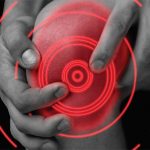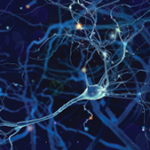New Frontiers of Inflammatory Pain Research Explored at ACR Convergence 2023
 SAN DIEGO—Recent scientific advances in understanding the complex connections between inflammation and pain were highlighted in a session called No Pain and Much to Gain: Mechanisms and Targets of Pain in Rheumatic Diseases at ACR Convergence, held Nov. 12 in San Diego. Better understanding of these links may help point the way toward future targets for treating pain—one of the most common, distressing and difficult-to-treat symptoms of osteoarthritis (OA), rheumatoid arthritis (RA) and other rheumatic and inflammatory conditions.
SAN DIEGO—Recent scientific advances in understanding the complex connections between inflammation and pain were highlighted in a session called No Pain and Much to Gain: Mechanisms and Targets of Pain in Rheumatic Diseases at ACR Convergence, held Nov. 12 in San Diego. Better understanding of these links may help point the way toward future targets for treating pain—one of the most common, distressing and difficult-to-treat symptoms of osteoarthritis (OA), rheumatoid arthritis (RA) and other rheumatic and inflammatory conditions.

Dr. Rachel Miller
Rachel Miller, PhD, BS, associate professor of medicine in the Division of Rheumatology at Rush University, Chicago, said OA risk factors predispose toward pain partly because they cause a change in joint mechanics, with remodeling of synovial joint tissue and activity-related mechanical sensitization responses accompanied by pain from movement. Her group has studied how these kinds of mechanical sensitization events occur in mouse models of OA, which can be measured using behavioral assays. Could understanding of these pathways lead to new treatment targets for persistent OA pain?
For example, Piezo2, a protein molecule and novel class of ion channels expressed by sensory neurons, is implicated in the development of mechanical sensitization in these animals.1 Dr. Miller’s research has shown that knocking out Piezo2 from nociceptors in mice, using mouse genetic techniques, offers protection from mechanical sensitization and weight-bearing pain—even though it does not protect against actual joint damage. This shows that Piezo2 plays a role in the animals’ ability to develop mechanical sensitization of their joints.
The researchers are also asking what other factors or pathways in the OA joint might be linked to Piezo2. Previous studies, for instance, have shown beneficial effects of treating patients with antibodies against nerve growth factor (NGF). Deleting Piezo2 also blocks NGF injection-induced knee swelling and mechanical hypersensitivity in mice. Over time, the researchers have seen macrophages infiltrating the dorsal root ganglia (DRGs), but that again failed to happen in Piezo2 knockout mice, suggesting that targeting Piezo2 may disrupt processes that support the development of persistent pain.
Neuroinflammation, with its infiltration of immune cells & activation of glial cells, causes both neurologic & psychiatric disorders & is a driving force in chronic pain.
The Dorsal Root Ganglion

Dr. Theodore Price
Theodore Price, PhD, a professor in the Department of Neuroscience at the University of Texas in Dallas, and director of its Center for Advanced Pain Studies, described recent work with human samples of the DRG in an effort to better understand pain mechanisms in rheumatic diseases, such as RA, and how immune changes within arthritic joints could be driving pain by intersecting the increase in cytokines and other ligands acting on the nociceptors. What is changing in the DRGs of people who have chronic pain?


